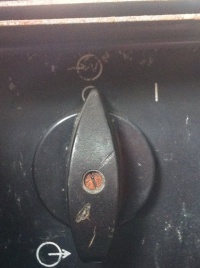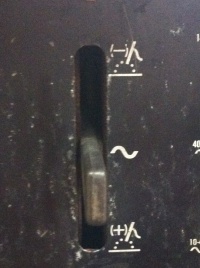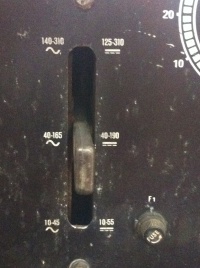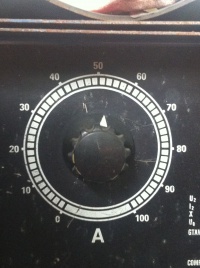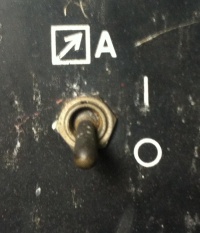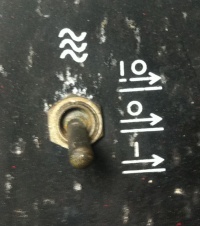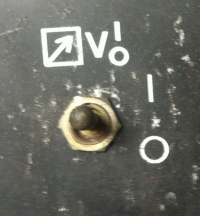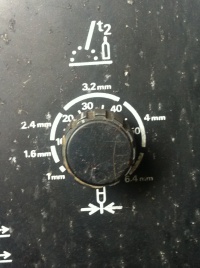TIG welder: Difference between revisions
No edit summary |
|||
| Line 94: | Line 94: | ||
* http://www.millerwelds.com/resources/improving-your-skills/tig/ | * http://www.millerwelds.com/resources/improving-your-skills/tig/ | ||
* http://www.mig-welding.co.uk/tig-calculator.htm | * http://www.mig-welding.co.uk/tig-calculator.htm | ||
* http://www.gowelding.org/TIG_Welding.html | |||
[[Category:Tools_and_Equipment]] | [[Category:Tools_and_Equipment]] | ||
Revision as of 00:30, 11 June 2014
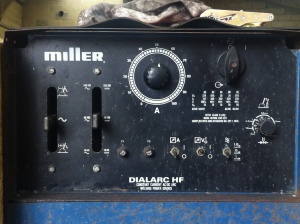
Miller Dialarc HF
TIG (Tungsten Inert Gas) welding is particularly useful for aluminium, It uses an electrode nozzle with a fixed (should be permanent, but they do wear) tungsten tip where a plasma 'flame' is created (started with a high-voltage / high freequency starter) and used to heat the filler wire and joint. The nozzle allows a flow of inert shield gas around the working area, reducing slag creation and (particularly important with aluminium) oxidation.
The TIG welder is a 'stick' welder - the electrode / nozzle is held in one hand, and the filler wire applied with the other.
Shield gas
For the TIG we use a Pureshield Argon.
Capacity and rating
The Tig welder has a large range
Controls
Details on the front panel controls
Tungsten and collets
We have a selection of the following tungsten tips and collets to fit
| Size | Color band | Used for |
|---|---|---|
| 1.6mm | Red | DCEN Steel |
| 2.4mm | Red | DCEN Steel |
| 1.6mm | White | AC Aluminium |
| 2.4mm | White | AC Aluminium |
| 1.6mm | Gold | AC or DCEN, All rounder Steel or Aluminium |
| 2.4mm | Gold | AC or DCEN, All rounded Steel or Aluminium |
Grinding tip shapes
Filler rods
We have the following stock of filler rods
- Steel
- Stainless steel
- Aluminium
- Copper
Power supply
A 63A plug and socket connection is used, with a pushbutton on/off control station and no-volt release.
RFID control of access will be installed shortly.
Tig welding tips
Random collection of useful links
